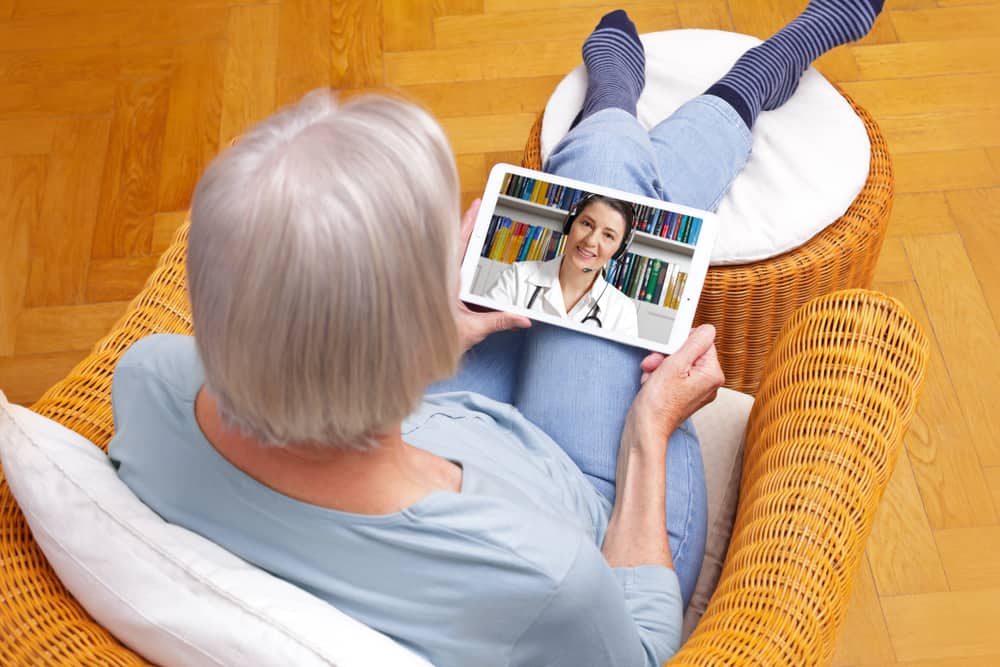The international healthcare community is leading the fight against COVID-19, but it as well as numerous other communities are feeling considerable strain. The number of reported cases has skyrocketed, and current U.S. guidance notes we can expect further spread of COVID-19 in the coming weeks.
At the time of publishing, the Johns Hopkins Coronavirus Resource Center reports there are over 86,000 cases confirmed in the United States and almost 550,000 worldwide. Effectively communicating with patients during COVID-19 is vital. As the situation evolves, patient engagement strategies are essential:
- to prevent the spread of illness within communities
- to ensure better patient outcomes and healthcare system stability
- to inspire confidence and provide reassurance to communities
Let’s look at 5 strategies to help your organization continue to do just that.
1. Connect with patients via telehealth screenings
The coronavirus spreads person-to-person. It also spreads from contact with contaminated surfaces or objects. Even individuals who may be experiencing little or no symptoms can be carriers. The key to flattening the curve is limiting movement, especially for those who are symptomatic.
Telehealth options can reduce the number of low-acuity cases inside medical facilities. This expands providers’ ability to see more patients as well as helps to prevent spread.

Not all of those with the virus will require hospitalization or any other form of advanced care. Focusing on telehealth options will reassure these patients and ensure those who have the most acute form of COVID-19 have access to urgent care.
Note: The Department of Health and Human Services has temporarily relaxed HIPAA standards for suitable telehealth devices. Healthcare facilities may now use technology such as Google Hangouts video, FaceTime, or Skype in the absence of other tools.
2. Proactively engage with high-risk patients
People with chronic conditions affecting the heart and lungs, those over the age of 65, or those suffering from immunosuppression are considered high risk of developing severe COVID-19 symptoms.
Mining electronic data to identify higher risk patients and creating an outreach strategy that keeps them informed for the duration of the pandemic are valuable steps in long-term patient engagement. Messages can be automated to inform individuals about concerns such as best steps to take to minimize risk of infection, what to do if they do fall ill, and how to best interact with and help protect their caregivers.
3. Provide accessible digital information on a comprehensive COVID-19 policy
COVID-19 has caused so much confusion for patients. Is it a good idea to get a routine doctor’s exam? What about a follow-up to urgent or emergency care? Clear, established, accessible, and well-promoted guidelines can help patients more easily understand. If certain types of visits should be postponed, it’s helpful for healthcare organizations to provide a timeframe for when to reschedule. Likewise, if care can be shifted to telehealth options, it’s helpful for that to be relayed to patients across a variety of platforms.

This means it’s crucial for content to be searchable. Patients shouldn’t have to crawl through countless webpages to find the information relevant to them. They should be able to quickly search through hospital websites to find out what they need. This will not only answer their questions but also ease the strain on hospital administration.
4. Maintain system-wide communication
COVID-19 is testing the limits of the healthcare community. It’s important for teams at facilities around the world to approach this stretch on resources with strategy so that they can provide the best care while maintaining efficiency and morale. From the top down, there should be no confusion regarding how to answer these types of questions:
- How do you use personal protection equipment?
- What alternatives are there for equipment when there are shortages?
- Can certain positions be shifted to remote work?
- Who is essential and non-essential?
- What should I do if I experience symptoms?
5. Activate multiple lines of communication
Unlike public health emergencies in the past, healthcare systems are better equipped than ever with effective communication channels. Embracing all channels, especially easily automated options like email, social media, and webpages, will allow facilities to reach the largest audiences in the shortest amount of time.
But these are only effective so long as the information on them is current. It’s the best way to get ahead of the crisis and to share information that helps patients, staff, and communities.
We’re here to empower you
At Harmony Healthcare, our goal is simple: to help healthcare professionals and organizations move past their limitations, empower them to create change, and make more success achievable. That’s the promise we make to our clients and our consultants.
Learn more about our client solutions here | Subscribe to our monthly newsletter here
Join our Facebook community here | Join our LinkedIn community here



